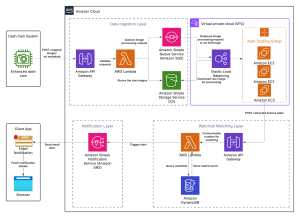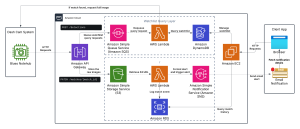🟢 Progress This Week
Design Presentation Preparation
-
- Finalized slides for the Design Review Presentation and helped Vicky prepare.
Database Design
- Designed the database schema for both the central server (DynamoDB + RDS) and web app backend.
- Defined table structures for:
• Global watchlist (DynamoDB)
• Match history & notifications (RDS)
• Officer authentication & access logs (RDS)
• Personal watchlists (DynamoDB)
Central Server Implementation
- Set up API Gateway endpoint for /detections, forwarding plate detections to an SQS message queue.
- Configured DynamoDB tables (global watchlist).
- Set up RDS tables for match history & notifications.
- Added Lambda function to listen to SQS, process messages, and query the global watchlist for matches.
- Notification back to dash cam will be integrated in the future after we know more about Blues.
🔜 Next Steps
-
Design Report (⏳ Priority)
- The big focus for next week.
- Web App Backend – Authentication
- Set up backend folder structure (microservices-based, MVC pattern).
- Implement authentication (Auth controllers, models, DAO layer).
- Ensure REST endpoints for authentication are accessible for the frontend.
- Continue Implementation for Central Server
- Test end-to-end for POST /detections.
- Start implementing the match upload layer.
📌 Overall Status
✅ Currently on track.
Making good progress, but next week will be heavy on implementation and documentation.









